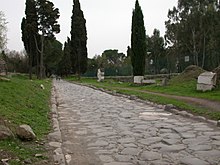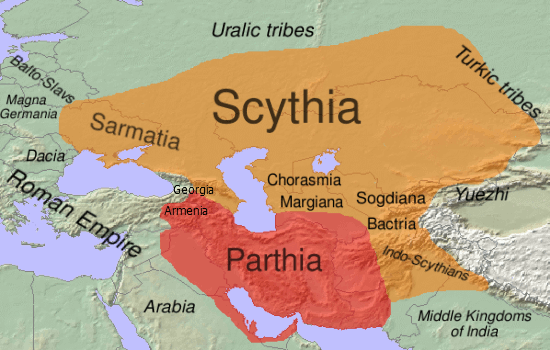WHERE DID THE ORIGINAL APOSTLES GO?
U.S.A.
 When Paul preached the Gospel at Rome, where was Peter? Why is the book of Acts strangely silent about the original 12 apostles after their departure from the land of Judea? Here is one of history’s best-kept secrets!
When Paul preached the Gospel at Rome, where was Peter? Why is the book of Acts strangely silent about the original 12 apostles after their departure from the land of Judea? Here is one of history’s best-kept secrets!
Why has the truth about the journeys of the original 12 apostles been hidden from public knowledge?
You read plainly of Paul’s travels through Cyprus, Asia Minor, Greece, Italy. But the movements of the original 12 apostles are a mystery. Why’? Did it ever seem strange to you that most of the New Testament following the book of Acts was written by Paul and not by Peter? Did you ever wonder why after Peter initiated the preaching of the Gospel to the gentiles at the house of Cornelius (Acts 10 and 11 ), he and others of the 12 apostles suddenly vanished from view? And why only Peter and John reappear for a fleeting moment in Jerusalem at the inspired confercncc recorded in Acts 15?
You read after Acts 15 only of Paul’s ministry to the gentiles. Why? What happened to the 12 apostles?
Let’s understand.
There is a reason why the journeys of the 12 apostles have been cloaked in mystery – until now .
Now it can be told
You probably have been told that Jesus chose the 12 disciples. ordained them apostles, sent them first, to preach to the Jews. When the Jews, as a nation, rejected that message. you probably have supposed that the apostles turned to the gentiles.
Nothing could be further from the truth.
It was the apostle Paul, called years later as a special apostle who was commissioned to bear the Gospel to the gentiles.
To Ananias, who was sent to baptize Paul, Christ gave this assurance: “Go, for he” – Saul, later named Paul – “is a chosen vessel of Mine to bear My name before gentiles, kings, and the children of Israel” (Acts 9:15 ).
It was Paul, not any of the 12, who said, “From now on I will go to the Gentiles” (Acts 18:6).
Jesus would not have called Paul as a special apostle to carry the Gospel to the gentiles, if the original 12 had been commissioned to preach to the gentiles. Then to whom – and – where were the 12 apostles sent’?
Jesus’ commission tells
Notice the surprising answer in Matthew 10:5-6: “These twelve Jesus sent out and commanded them, saying, ‘ Do not go into the way of the Gentiles, and do not enter a city of the Samaritans. But go rather to the lost sheep of the house of Israel.”
Jesus meant what He said! He “commanded them .” The 12 were forbidden to spread the Gospel among the gentiles. It was Paul who was commissioned to that work. The 12 were to go, instead , to the “lost sheep of the house of lsrael” – the Lost Ten Tribes.
Granted. Christ did send Peter to the home of Cornelius (Acts 10 and 11) to open the Gospel to the gentiles , but Peter’s life mission was to carry the Gospel to “the lost sheep of the house of Israel.” Peter merely opened the door, as the chief apostle, for the gentiles. It was Paul who went through the door and brought the Gospel to the nations. Granted. Peter, in his capacity of chief apostle, made one trip to the gentile Samaritans. But that was not to bring the Gospel to them. Philip had done that! Peter and John merely prayed for the Samaritans that they would receive the Holy Spirit (Acts 8:5, 14-17). Now we know to whom the 12 apostles were sent. They were not sent to the gentiles, but to ” the lost sheep of the House of Israel.” It was Paul who went to the gentiles.
Now to discover where Peter and others of the 12 went after they left the land of Judea.
That has been one of the best kept secrets of history. If the world had known the lands to which the 12 apostles journeyed, the House of Israel would never
have been lost from view! But God intended for a special purpose which few understand that the identity of the lost House of Israel should not be revealed until this pulsating 20th century.
“House of Israel” identified
From the sons of Jacob – surnamed Israel – sprang 12 tribes. Under David they were united as one nation – Israel. After the death of Solomon, David”s son, the 12 tribes were divided into two nations. The tribe of Judah split off from the nation Israel in order to retain the king, whom Israel had rejected. Benjamin went with Judah. The new nation thus formed with its capital at Jerusalem, was known as the “House of Judah.” Its people were called Jews.
The northern 10 tribes, who rejected Solomon’s son, became known as the House of Israel. Its capital, later, was Samaria. Whole books of’ the Old Testament arc devoted to the power struggles between Israel and Judah. The first lime the word ” Jews” appears in the Bible you will discover the king of Israel, allied with Syria, driving the Jews from the Red Sea port of Elath (II Kings 16:6-7).
The northern 10 tribes, the House of Israel, were overthrown and led into captivity (721 B.C.) by the mighty Assyrian Empire. Its people were led into captivity beyond the Euphrates River and planted in Assyria and the cities of the Medes around Lake Urmia, southwest of the Caspian Sea.
The House of Israel never returned to the area. The nation became known in history as the Lost Ten Tribes. To them Jesus sent the 12 apostles!
The House of Judah – the Jewish people – remained in Palestine until the Babylonian invasions under King Nebuchadnezzar more than 100 years later. Judah was deported to Mesopotamia. Seventy years after the rise of Babylon to a position of world power, the Jews in 538 B.C. returned to the original land of Israel.
In history they now became commonly known as ” Israel’ ” because they were the only descendants of Jacob or Israel now living in Israel. The 10 tribes – the House of Israel – became lost in the land of their exile.
Jesus “came “to His own” the House of Judah, the Jews – “and His own did not receive Him” (John 1:11). Jesus was of the lineage of David, of the House of Judah. When His own people the Jews rejected Him, He did not turn to the gentiles. It was Paul who did. Instead, Jesus said to the gentile woman, “I am not sent except to the lost sheep of the house of Israel” (Matthew 15:24).
To fulfill, later, that divine mission – for Jesus was soon slain on Golgotha to pay for the sins of the world – He commissioned His original 12 disciples. They were commanded, “Go to the lost sheep of the house of Israel.”
They did go, but history has lost sight of where they went. Their journeys have been shrouded in mystery – until now!
What New Testament reveals
The history of the early New Testament Church is preserved in the book of Acts. But have you ever noticed that Acts ends in the middle of the story? Luke doesn’t even finish the life of Paul after his two years’ imprisonment. Why?
Section of Roman road in the
Eifel region, NW Germany
Built by the ancient Romans, these roads are typical of those the apostles used in carrying the Gospel during the first century.
You will find the answer in Christ’s commission to Paul. Even before Paul was baptized, Christ had planned the future work he was to accomplish.
First, Paul was to teach the gentiles – which he did in Cyprus, Asia Minor and Greece. Second, he was to appear before kings – an event brought about by a two-year imprisonment at Rome. At the end of that two year period, during which no accusers appeared, Paul would automatically have been released according to Roman law. It is at this point that Luke strangely breaks off the story of Paul’s life. See Acts 28:31.
But Paul’s third mission was not yet accomplished. Christ had chosen Paul for a threefold purpose – “to bear [His] name before Gentiles, kings, and the children of Israel” (Acts 9:15). There is the answer. He, too, was to end his work among the Lost Ten Tribes!
Luke was not permitted by Christ to include in Acts the final journeys of Paul’s life. It would have revealed the whereabouts of the children of Israel.
It was not then God’s time to make that known. But the moment has now come, in this climactic “time of the end,” to pull back the shroud of history and reveal where the original 12 apostles went.
Now turn to the book of James. To whom is the book addressed? Read it: “James, a servant of God and of the Lord Jesus Christ, to the twelve tribes which are scattered abroad: greeting” (James 1: 1).
You probably never noticed that before. This book is not addressed to the gentiles. It is not addressed exclusively to Judah – the Jews. It is addressed to all 12 tribes. To the House of Judah and to the House of Israel – the Lost Ten Tribes.
Have you ever noticed that the letter of James, like the book of Acts, ends abruptly, without the normal salutations? Read it – James 5:20.
Compare it with Paul’s epistles. In the original inspired Greek New Testament every one of Paul’s letters ends with an “Amen.” Every one of the four gospels ends with an “Amen.” The book of Revelation ends with an “Amen.”
This little word Amen, of Hebrew derivation, signifies completion. In the New King James (most modern versions are incorrect, and in several instances leave off the proper ending found in the official printed Greek text) every one of the New Testament books ends with an “Amen” except three – Acts, James and III John. In these three, and these three only, the word ” Amen” is not in the inspired original Greek. It is purposely missing. Why?
Three missing words
Each missing “Amen” is a special sign. It indicates God wants us to understand that certain knowledge was not to be made known to the world – until now , when the Gospel is being sent around the world as a final witness before the end of this age. God purposely excluded from the book of Acts the final chapers in the history of the early true Church. If they had been included, the identity and where abouts of Israel and of the true Church would have been revealed. It was part of God’s plan that the House of Israel should lose its identity and think itself gentile.
If the book of James had ended with the ordinary salutation, the nations of Israel would have been disclosed. Paul often ends his letters with names of places and people. See the last verses of Romans, Colossians and Hebrews, for example. This is the very part missing, purposely, from James. And why is the short letter of III John missing an “Amen” ? God did not permit John to make known, in plain language, the full nature of a conspiracy by which some sought to gain control of local congregations, expel those truly converted and loyal to the apostle John and make Christianity acceptable to the majority of the Roman Empire (see III John 9 and 10).
That is why John cut his letter short. The missing ” Amen” is to tell us to look elsewhere in the Bible for the answer. The conspiracy is described, if you have eyes to see. in Revelation 17, Acts 8 and many other chapters of the Bible .
But return, for a moment, to the letter of James.
Wars reveal where
From James 4:1 we learn that wars were being waged among the lost tribes of Israel. “Where do wars and fights come from among you?” asks James.
What wars were these? No wars existed among the Jews until the outbreak, several years later, of the revolt against the Romans. These wars absolutely identify the lost House of Israel – the lands to which the apostles journeyed .
James wrote his book about A.D. 60 (he was martyred two years later, according to Josephus). The world was temporarily at peace – cowed by the fear of Roman military might. Just prior to A. D. 60 only two areas of the world were torn by wars and civil fightings. When you discover which areas these were, you will have located where the Lost Ten Tribes, addressed by James,were then living. All one need do is search military history for the period immediately before and up to the year A.D. 60. The results will shock you! Those two lands were the British Isles and the Parthian Empire.
But these were not the only lands to which the exiled House of Israel journeyed. Turn in your Bible to I Peter.
To whom did Peter write?
To whom did Peter address his letters?
Here it is: “Peter, an apostle of Jesus Christ, to the strangers scattered throughout Pontus, Galatia, Cappadocia, Asia and Bithynia” (I Peter 1 :1. Authorized Version).
These were not gentiles. Peter was not the apostle to the gentiles (Galatians 2:8) . Paul was. Peter was chief apostle to the lost sheep of the House of Israel.
Notice the word ” strangers. ” It does not mean gentiles. The original Greek is parepidemos. It means “a resident foreigner,” literally, “an alien alongside.” It refers not to gentiles, but to non-gentiles who dwelt among gentiles. as foreigners and aliens.
Peter was addressing part of the lost 10 tribes who dwelt among the gentiles as aliens or strangers. He was not writing primarily to the Jewish people. He would not have addressed them as “strangers,” for he was himself a Jew.
Now notice the regions to which Peter addressed his letter. You may have to look at a Bible map to locate them. They are all located in the northern half of Asia Minor, modern Turkey. These lands lay immediately west of the Parthian Empire.
Paul did not preach in these districts. Paul spent his years in Asia Minor in the southern, or Greek half. “And so I have made it my aim.” said Paul, “to preach the Gospel, not where Christ was named, lest I should build on an other man’s foundation” (Romans 15:20). Paul did not preach in the areas where Peter and others of the original 12 apostles had carried the Gospel.
Nowhere in your New Testament can you find Paul preaching in Pontus or Cappadocia or Bithynia. These regions were under the jurisdiction of Peter and certain of the 12.
Paul did spread the Gospel in the province of Asia – but only in the southern half, in the districts around Ephesus. Paul was expressly forbidden to preach in Mysia, the northern district of the Roman province of Asia (Acts 16:7-8). Those were the regions in which the lost sheep of the House of Israel dwelt as strangers among the gentiles!
Paul did preach. on his first journey. in southern Galatia, in the cities of Iconium, Lystra and Derbe (Acts 14). But nowhere in the New Testament do you find Paul journeying into northern Galatia – the area to which Peter addresses his letter to the tribes of Israel.
Remnant of Ten Tribes on shores of Black Sea
Notice the historic proof confirming Peter’s letters – that a remnant of the House of Israel was settled on the shores of the Black Sea in northern Asia Minor in early New Testament times.
Greek writers, in the time of Christ, recognized that the regions of northern Asia Minor were non Greek (except for a few Greek trading colonies in the port cities). New peoples, the Greeks tell us, were living in northern Asia Minor in New Testament times. Here is the surprising account of Diodorus of Sicily:
”Many conquered peoples were removed to other homes, and two of these became very great colonies: the one was composed of Assyrians and was removed to the land between Paphlagonia and Pontus and the other was drawn from Media and planted along the Tanais [the River Don in ancient Scythia – the modern Ukraine, north of the Black Sea in southern Russia]” (Book II, §43).
Notice the areas from which these colonies came – Assyria and Media. The very areas to which the House of Israel was taken captive! “So Israel was carried away from their own land to Assyria, as it is to this day” (II Kings 17:23). “The king of Assyria took Samaria and carried Israel away to Assyria and placed them in Halah and in Habor by the River of Gozan, and in the cities of the Medes”‘ (verse 6).
The House of Israel dwelt in captivity as aliens or strangers among the Assyrians. When the Assyrians were later removed from their homeland toward northern Asia Minor, part of the House of Israel migrated with them. We find them still there in New Testament times.
To these people – the lost sheep of the House of Israel – the strangers (I Peter 1 : 1 ) – the apostle Peter addresses his first letter. We shall see later when and where these “lost sheep” migrated from Asia Minor to Northwest Europe.
Now to draw back the curtain of history and see where each of the original 12 apostles preached. You’II be amazed!
(To be continued)





